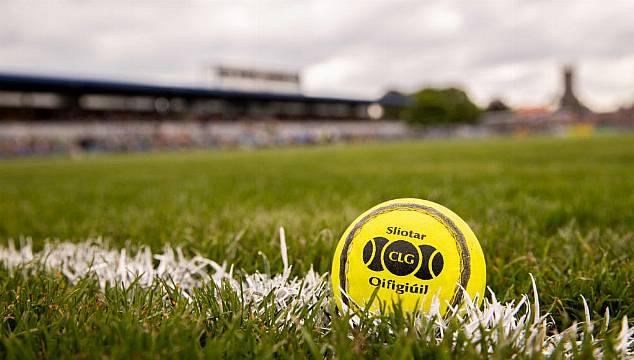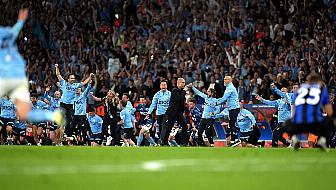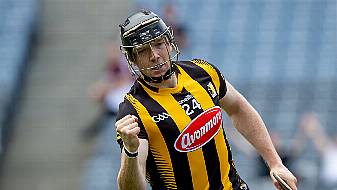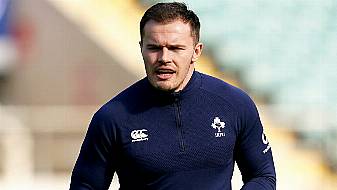Inter-county hurlers are at most risk of suffering concussion during the later stages of a match and when going to get the sliotar, according to the findings of a new medical study.
Researchers who carried out extensive video analysis of 82 inter-county hurling matches played between 2018 and 2019 also found the most severe incidents involved contact with the side of the head from an opponent’s shoulder.
The findings revealed that hurlers were 4.5 times more likely to experience a severe, potentially concussive event (PCE) in the final quarter of a match compared to the first quarter.
A PCE is defined as any incident in which a player is unable to resume play in a meaningful capacity within five seconds of direct and visible head contact, while they were also analysed for showing signs of concussion including lying motionless, blank and vacant looks and uncoordinated movement.
The study found that players were going to receive or control the sliotar in 36 per cent of incidents.
Players were also 6.5 times more likely to show a visible sign of concussion from a blow to their head from a shoulder than by being hit with a hurley, according to the results of the study by academics from the Sport and Exercise Research Institute at Ulster University in Belfast.
One of the report’s main authors, Mario Rotundo, said the findings could provide guidance for the development of targeted player protection strategies including allowing more substitutions in the second half or allowing longer half-time breaks to preserve the tackling technique and resilience of players.
“Adding neck strengthening protocols and emphasising tackle technique in training may also be beneficial,” said Mr Rotundo.
Recommendations
The study recommended that there should be severe penalties, suspensions and fines for players responsible for blind-side hits to the head regardless of intent in order to encourage players to be more deliberate and controlled in their tackles.
Mr Rotundo said players should also be taught from an early age that hits to the head, especially from the side on an unsuspecting opponent, can cause severe brain injury, while coaches should emphasise “good tackling technique and ‘heads-up’ play.”
The researchers identified a total of 183 PCEs during the 82 matches, representing an average of 2.23 incidents per game.
Although a PCE does not necessarily indicate a concussion has occurred, Mr Rotundo said the findings of 59.5 PCEs per 1,000 match hours suggested there was “a much higher incidence of concussion in hurling that is perhaps estimated.”
Mr Rotundo said it was reasonable to suggest that elite hurlers are at an elevated risk of concussion.
According to the findings, blows to the side of the head were 2.7 times more likely to result in a player showing visible signs of concussion than impacts to the front or back of the skull.
The jaw area was the most impacted region of the head, accounting for 31 per cent of all PCEs.
Mr Rotundo said most impacts to the side of the head were caused by an opponent’s head or shoulder, while blows to the front or back of the head were primarily arising from being struck by a hurley.
The results also revealed that 42 per cent of players had not anticipated the impending impact.
A similar study by the same research team published in 2021 found an “unacceptably high rate” of inter-county hurlers suspected of having sustained concussion during a game were allowed to resume play without adequate assessment.
It revealed that only 10 out of 43 players who showed one or more signs of concussion were removed from play.
Likelihood of concussion
While there was a relatively even distribution of PCEs during matches, players involved in incidents which occurred in the final quarter had a statistically significant likelihood of showing visible signs of concussion.
Mr Rotundo claimed the higher rate of visible concussion towards the end of the game could be due to a combination of fatigued muscles and a commensurate decrease in tackling technique.
He added: “It is possible that players are more prone to excessive aggression and impulsivity with prolonged physical exertion and as the game draws to a close.”
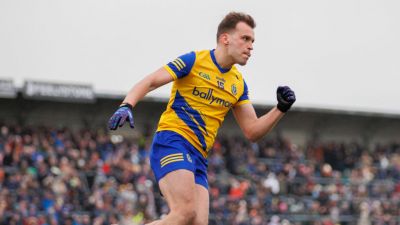
The study, which is published in the Irish Journal of Medical Science, said its findings were consistent with similar research into rugby and ice hockey which indicated a correlation between fatigue and an elevated risk of concussion.
“Fatigued muscles are less able to absorb energy and, as a result, are likely more susceptible to injury,” explained Mr Rotundo.
The study also identified different trends associated with different parts of the pitch with players more exposed to body tackles in the goal area, while tackles with a hurley were more common in the centre of the pitch and on the wings.
Mr Rotundo said the findings of the study raised the important question as to whether shoulder-to-head impacts were more dangerous because of the region they tended to affect, namely the side of the head.
